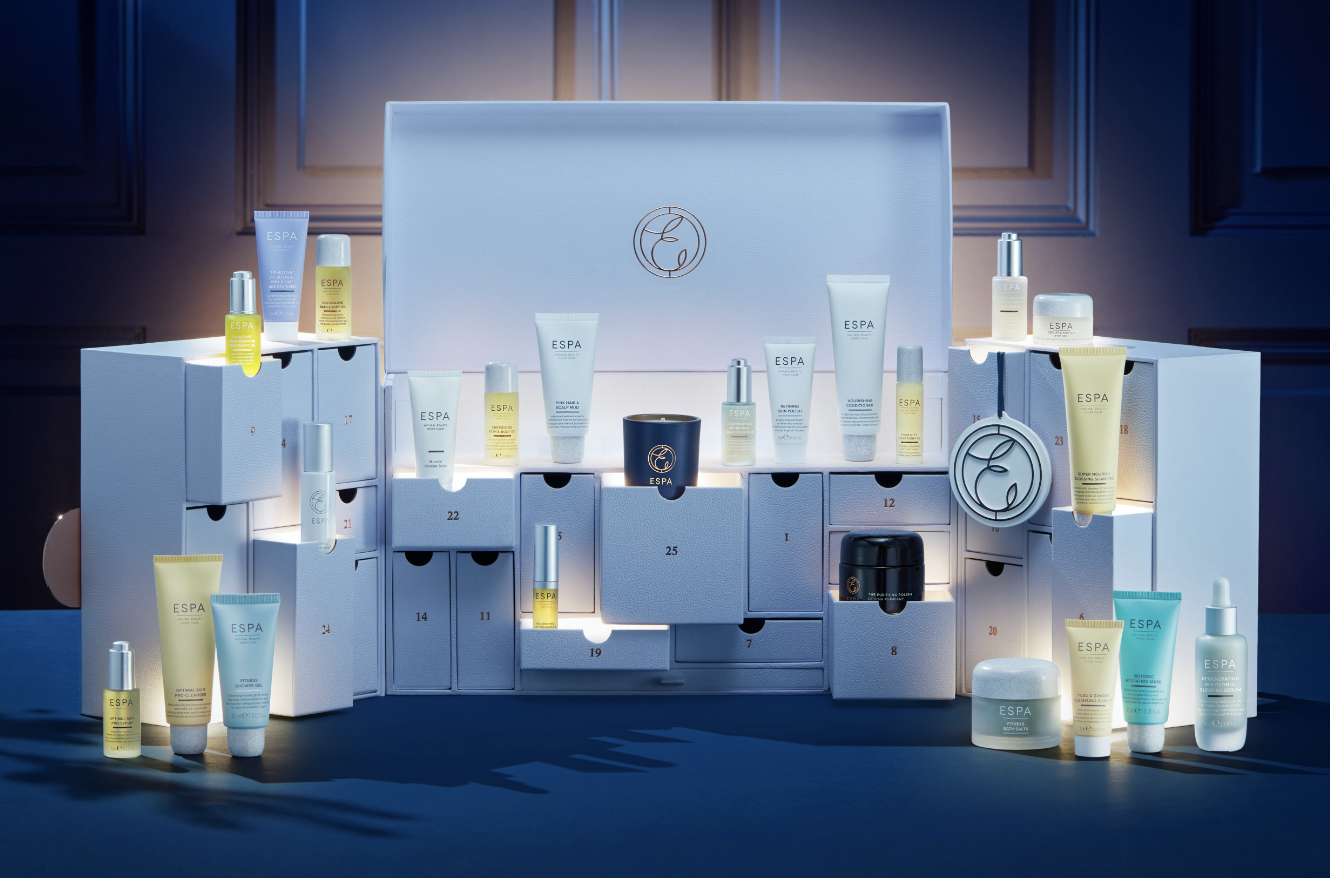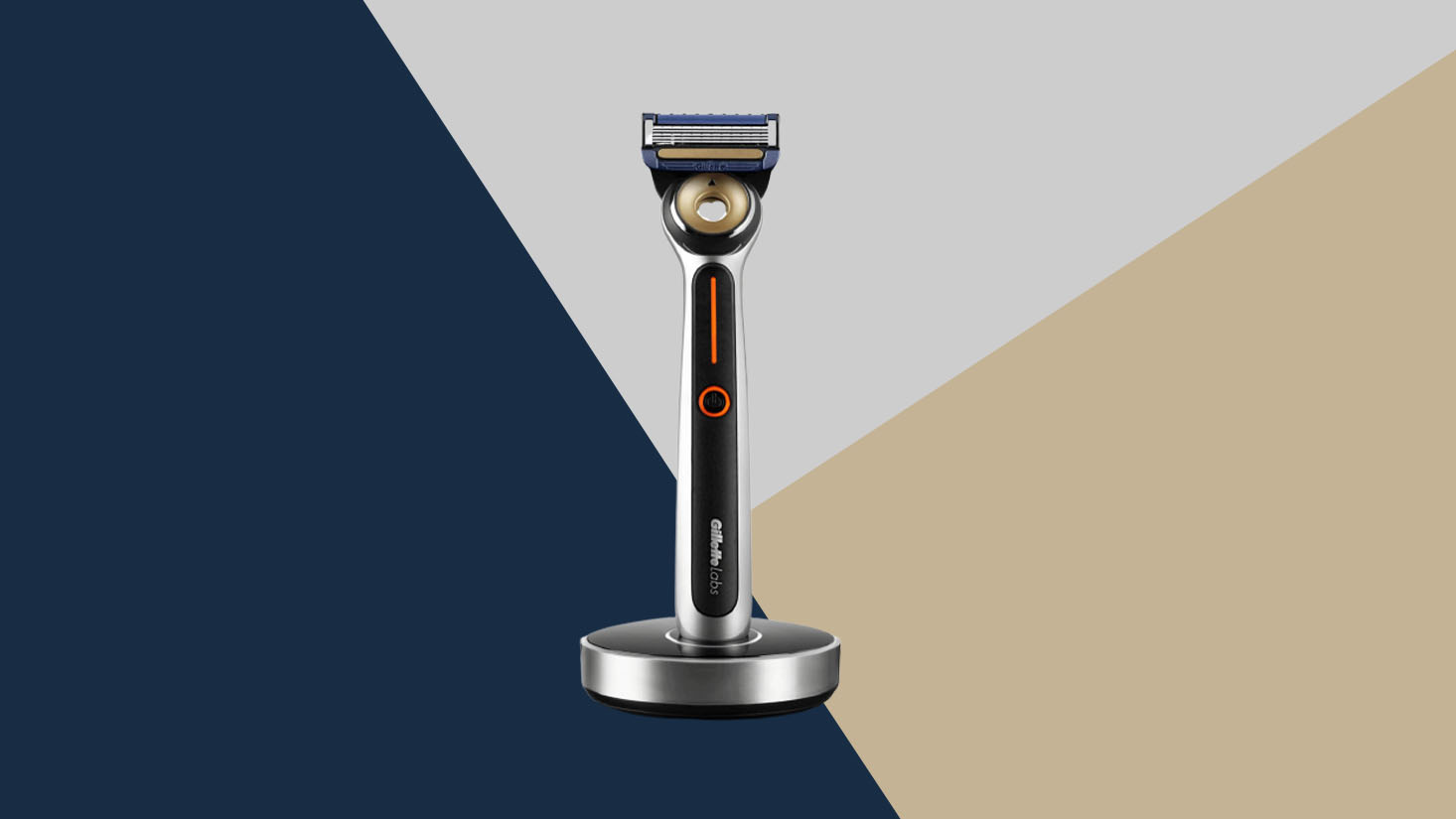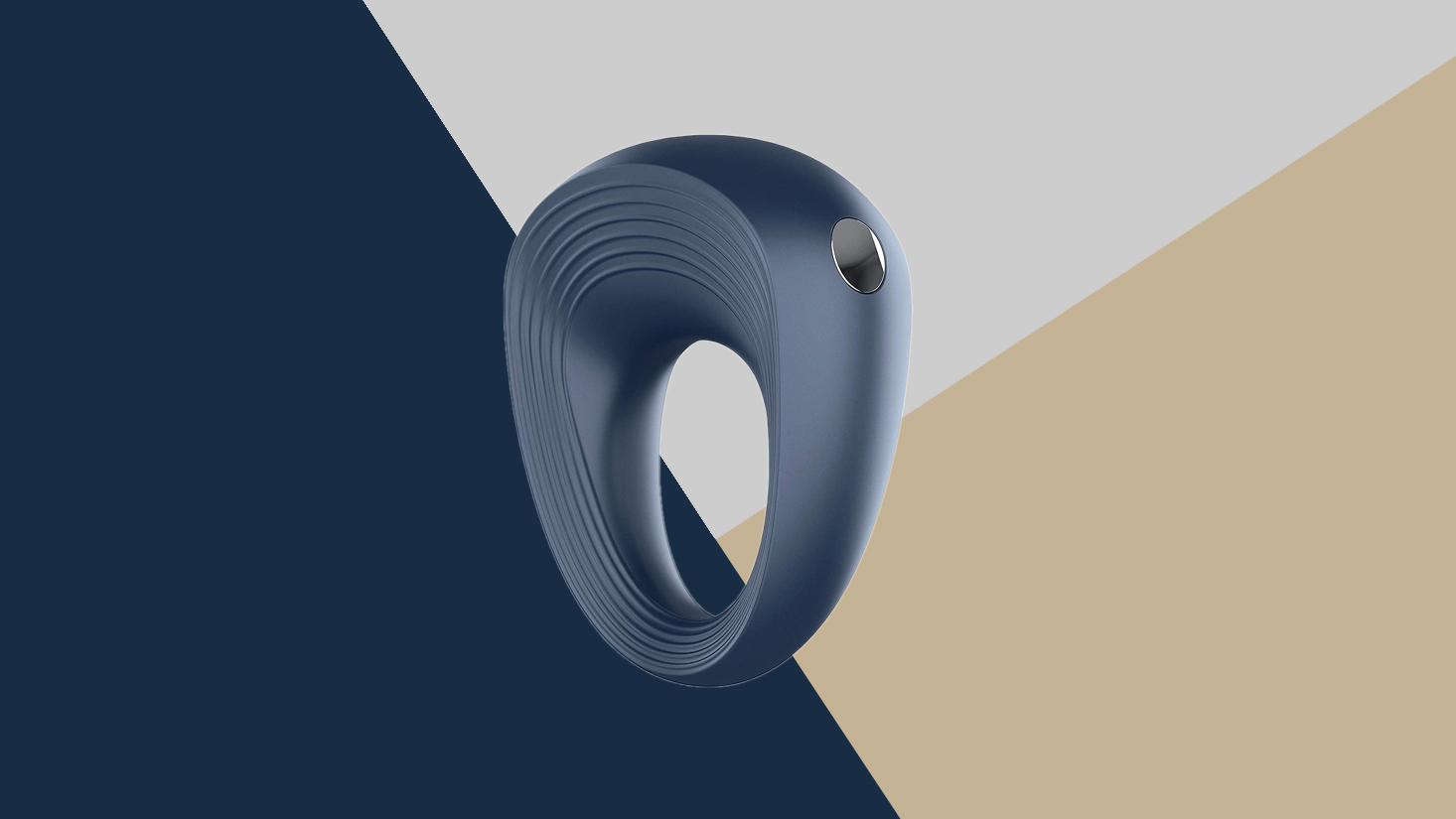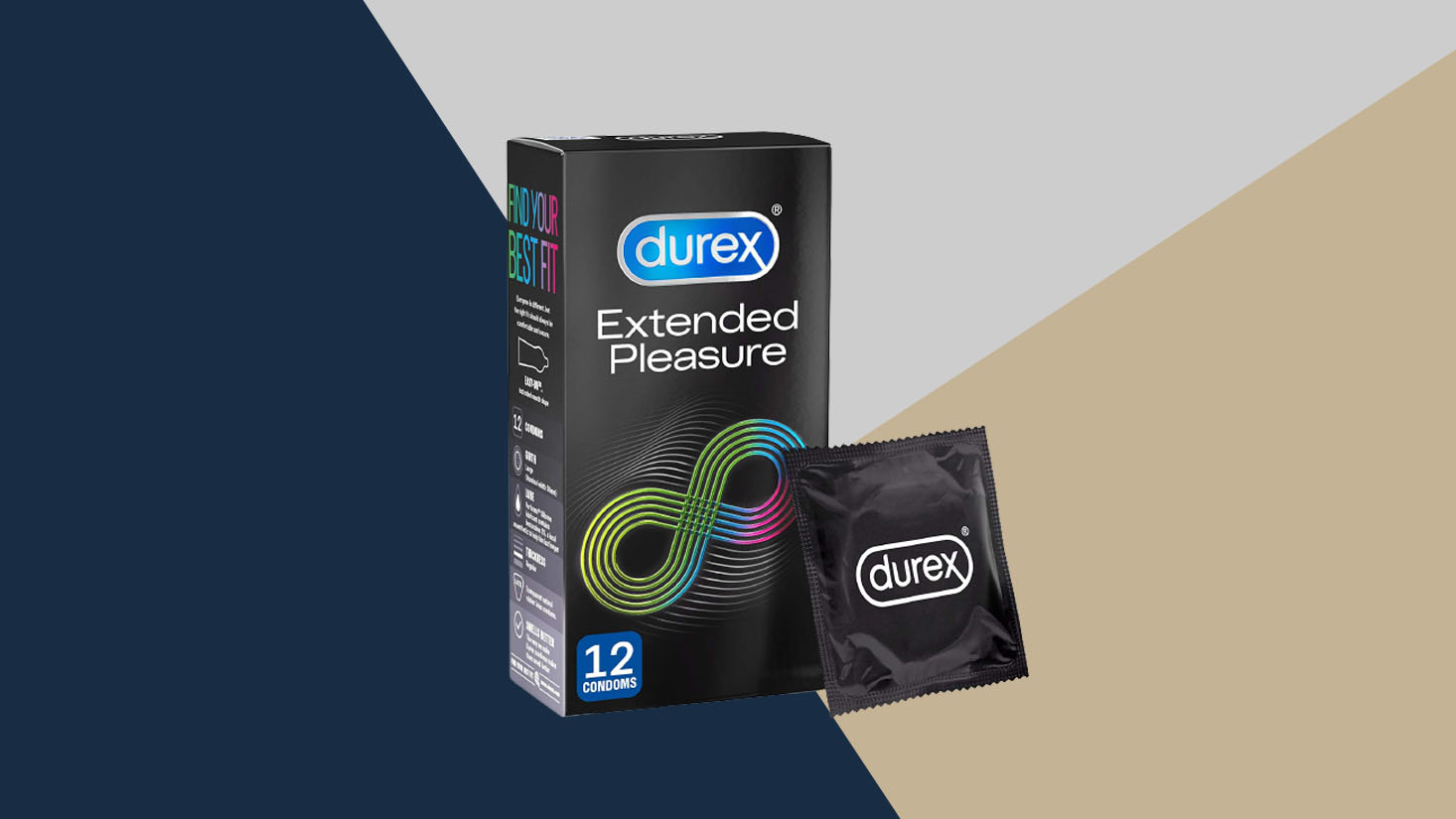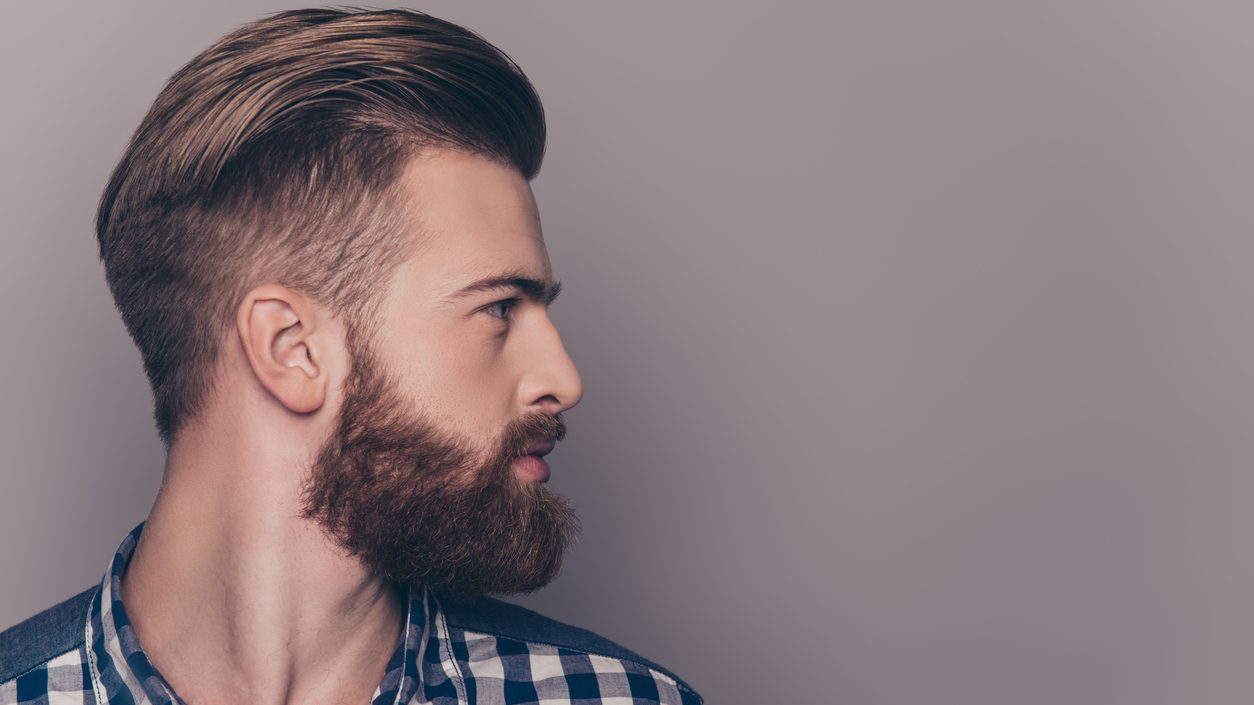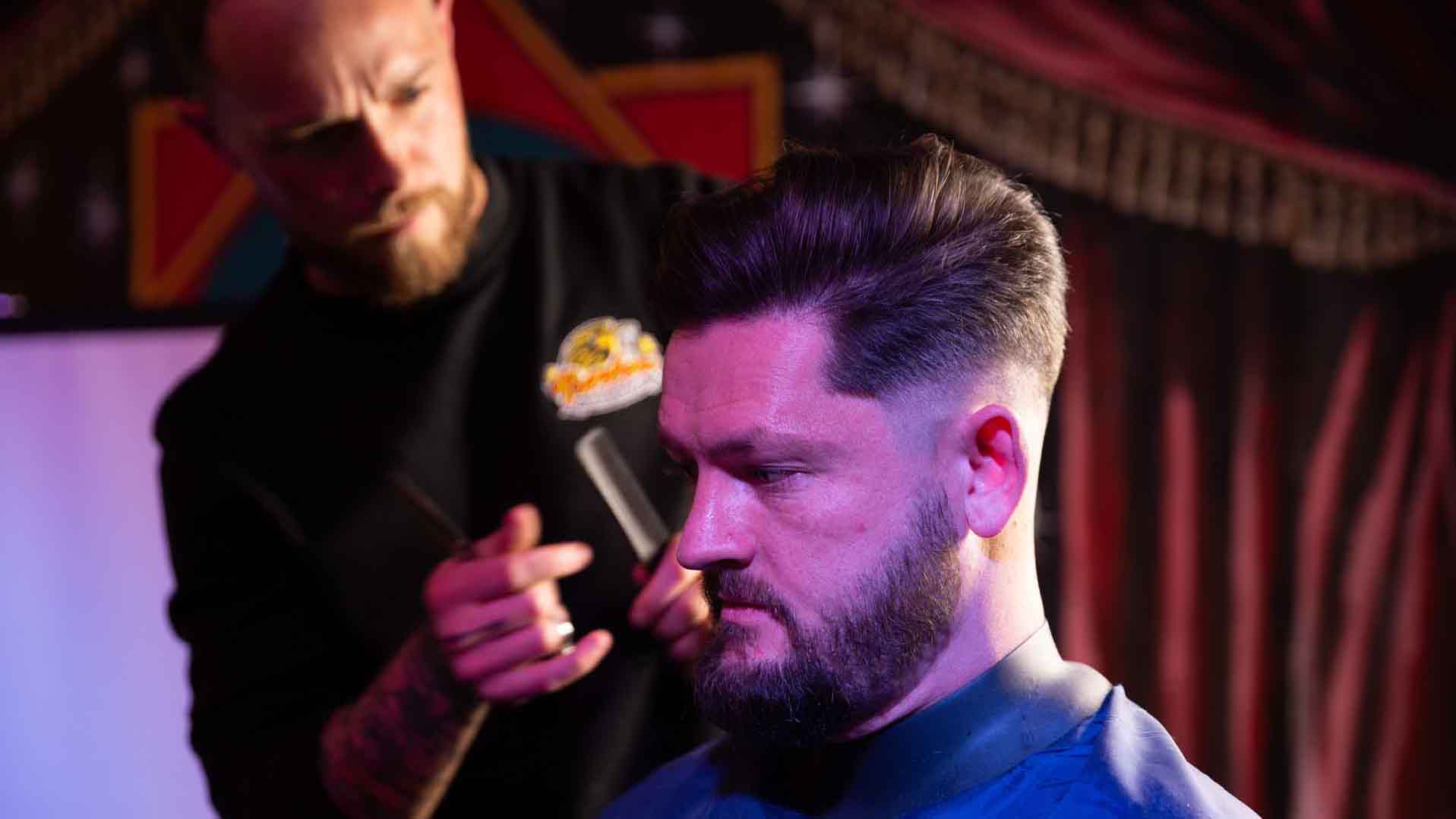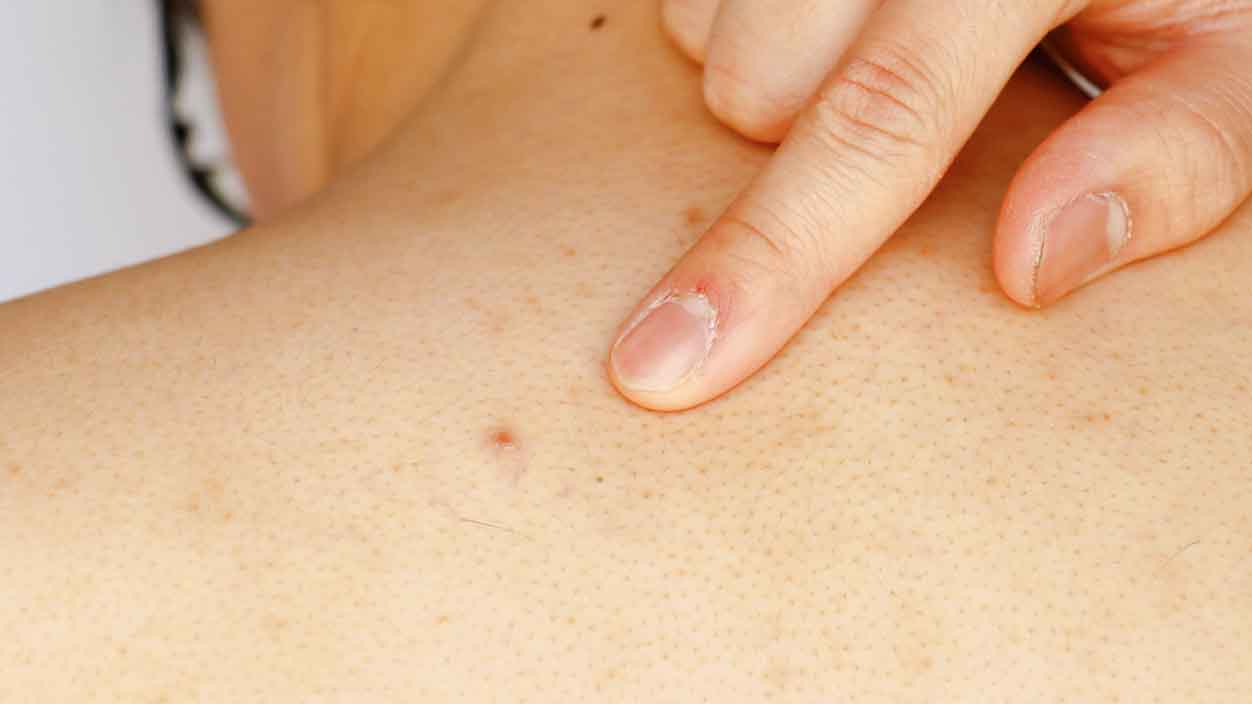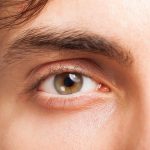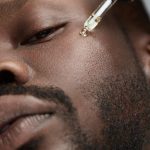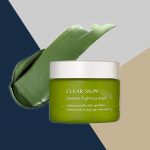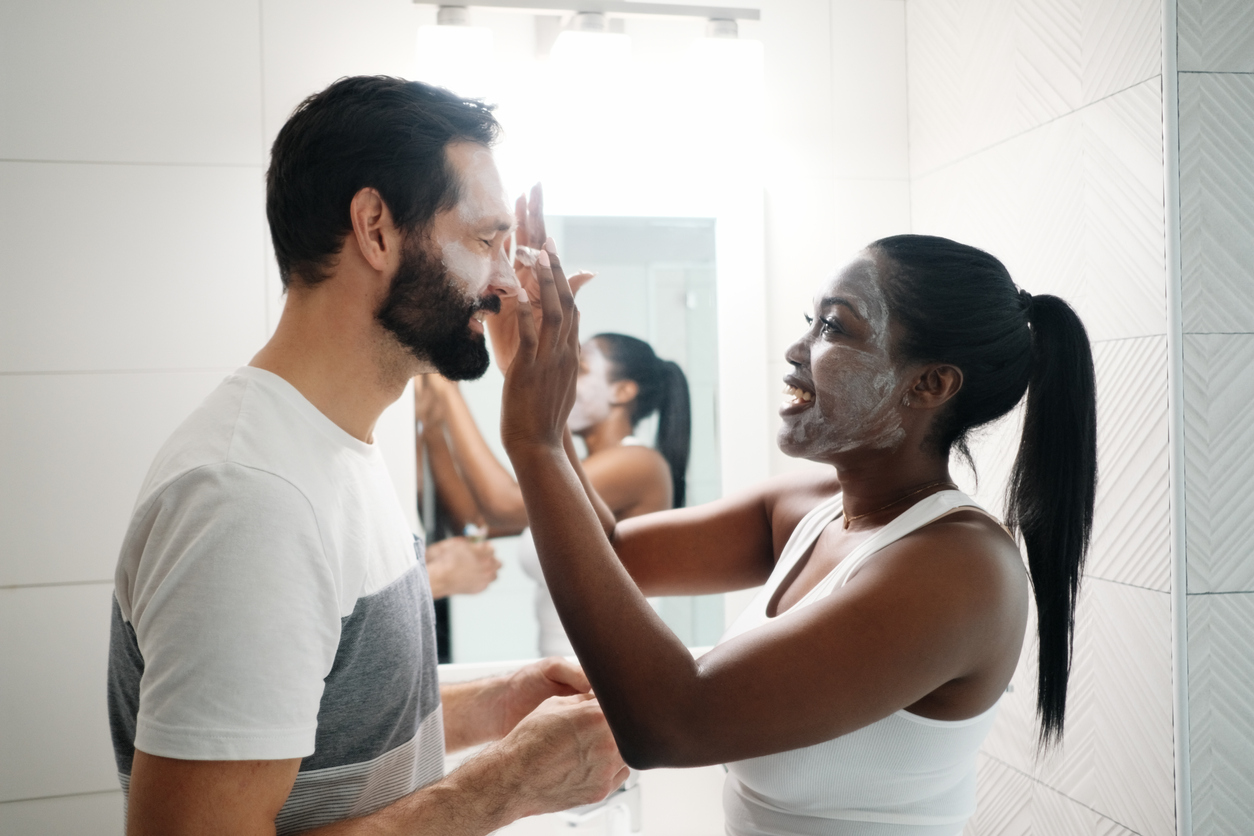
Men’s skin vs women’s skin: Are there differences or is it marketing BS?
The men’s beauty market is booming but do you really need to buy products aimed only at men, or is it marketing bullshit? Skincare experts reveals all
In recent years, the market for beauty products aimed at men’s skin has grown considerably. So much so, it’s expected to be worth $166 billion in 2022, according to Allied Market Research.
Yet for anyone interested in taking more care of their skin and hair, knowing what products to buy can be a challenge. When it comes to skincare, do we really need to stick to products marketed at our own gender? Or are they largely based on marketing bullshit? A skincare expert reveals all.
Men’s Skin vs Women’s Skin
Within scientific circles, there is a certain level of debate about just how stark the differences are between men’s and women’s skin. Some experts believe it comes down to your type of skin, rather than your gender. Others are adamant that men’s skin is different from women’s, so should be treated as such.
The latter viewpoint is based on the fact that research from 2018, which looked at more than 1,000 pieces of research into male and female skin, made some notable findings.
Hydration and oil levels: Men vs Women
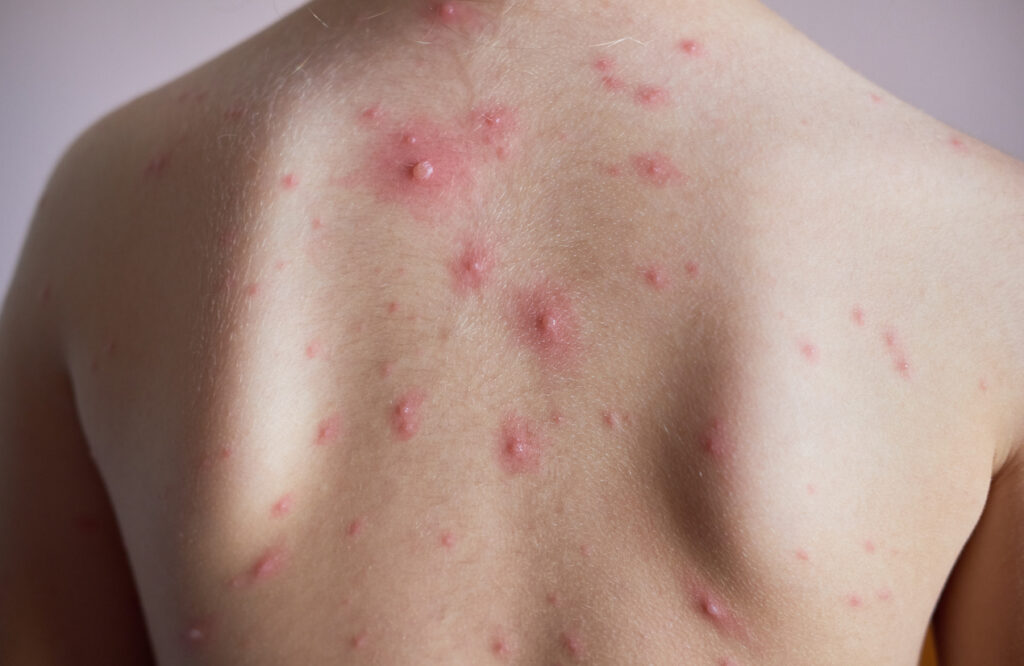 Getty Images/iStockphoto
Getty Images/iStockphoto Firstly, women’s skin was found to be slightly less hydrated. This means it is more prone to dry patches, redness, and irritation. This has also been attributed to the reason why women start to show signs of fine lines sooner than men, particularly around the eyes. The skin is thinner around the eyes and doesn’t contain oil glands so becomes crepey quicker.
Think of it like the skin on a grape, if let too long without moisture it becomes a shrivelled raisin…
By contrast, the amount of sebum – the oily substance that makes hair greasy and skin oily – was found to be higher in men. Sebum, and specifically the sebaceous glands are highly influenced by sex hormones, namely androgens. Androgens include male sex hormones like testosterone and the more androgens bound to the receptors on these glands, the more sebum is produced.
An overproduction of sebum is what causes oily skin, it can cause acne and it’s what gives you larger pores. This has been linked to why men experience more acne than women, although it affects both sexes.
Men’s skin is thicker
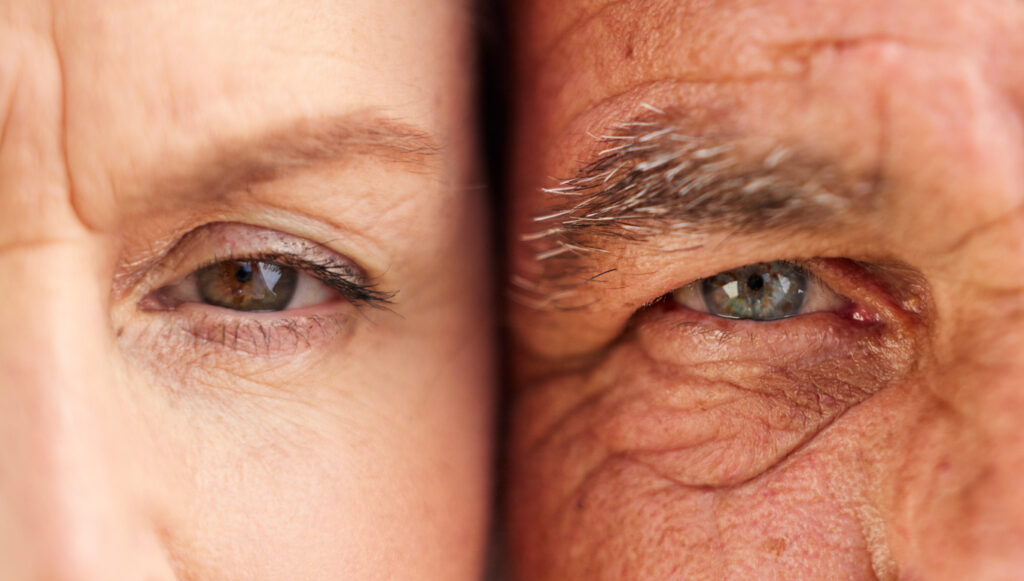 Getty Images/iStockphoto
Getty Images/iStockphoto In the research, skin pigmentation (dark spots, red patches, and general variations in skin tone across the face), as well as thickness were also found to be significantly higher in men.
WHAT’S YOUR SKIN TYPE?
Knowing your skin type means you can tailor products further.
After showering, don’t apply any products and wait 30 minutes.
If your face feels tight, you have dry skin. If it’s tight and red, you have sensitive skin.
If you have grease on your forehead and nose but not on your cheeks, you have combination skin. And if you’re entire face is greasy, your skin type is oily.
“Men’s skin is around 20–25% thicker than women’s skin,” skincare expert Randa Zaid from Hayaty Natural explained to MBman.
“It contains more collagen and elastin and tends to produce more oil due to the amount of testosterone in the male body. But women also have certain levels of this hormone; it’s not exclusive to men.”
This can result in men showing signs of ageing later in life than women. The downside though is that when these wrinkles do appear, they’re typically deeper and more prominent.
Hayaty Natural is a genderless skincare brand “inspired by the wisdom of the ancient Egyptians.”
Its vegan, Fairtrade and organic products use medicinal botanicals like Black Seed and are developed using ancient recipes used by the Pharaohs.
And as Zaid continues, the Egyptians made no distinction in skincare between genders. “Beauty held significant value in ancient Egypt and the possession of an x or y chromosome had no bearing on the products they used for their self-care.
“The same products have been found in the graves of both men and women.”
Eye bags can be more prominent
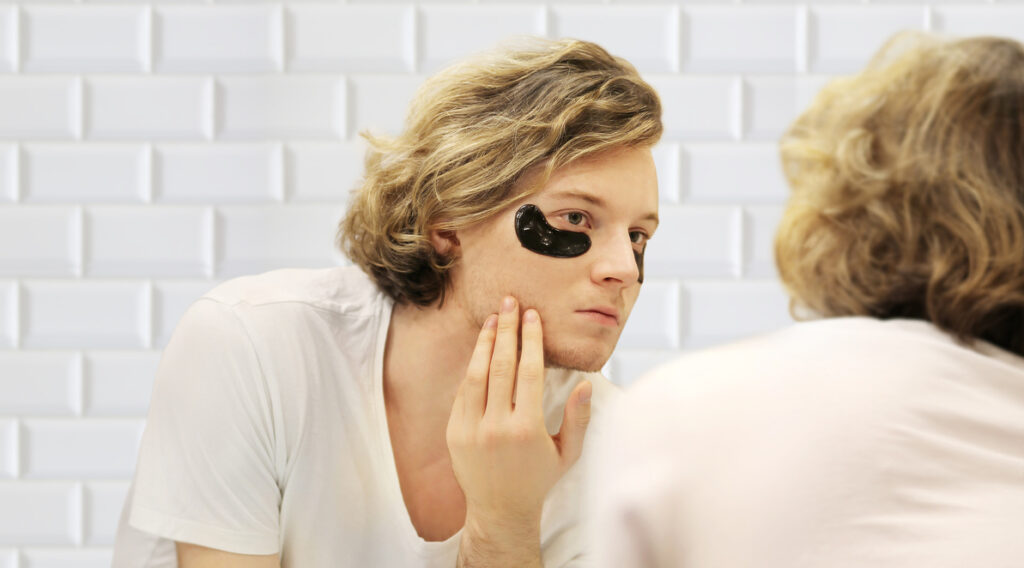 Getty Images/iStockphoto
Getty Images/iStockphoto Elsewhere, facial sagging was found to be more prominent in men’s lower eyelids – which leads to eye bags or dark circles – and this tends to go hand-in-hand with the increased pigmentation.
As you can read in our How to get rid of bags under eyes guide, dark circles and eye bags fall under the clinical term periorbital hyperpigmentation. The skin around the eyes is thinner which makes the underlying blood vessels more prominent and this can make the skin look darker for both sexes.
“Although there are some minor differences, they are not enough to warrant a gender-focused skincare industry,” added Zaid.
FURTHER READING: How to get rid of bags under eyes
So what does this mean in practice?
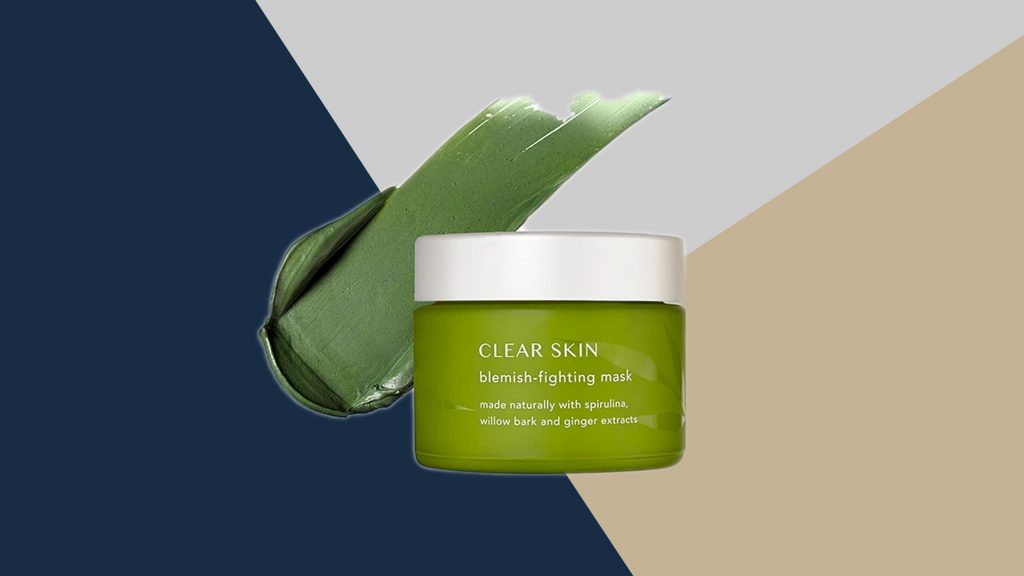 MBman
MBman
All of this means that as a general rule, men will likely benefit from:
- Non-comedogenic products – read more about what this means here
- Products aimed at oily or combination skin
- Exfoliators
- Clay face masks – or any purifying face mask that helps clear pores
- Products containing Vitamin C and niacinamide, to help brighten and reduce pigmentation
- And products containing retinol and caffeine, to reduce puffiness around the eyes and prevent wrinkles
However, it’s not a given. “Understanding your skin will better allow you to care for it,” said Paolo Casseb, a brand specialist in men’s grooming at Selfridges, and creative director of Azuaya. “If in absolute doubt, go for a facial with an expert or to a skincare specialist brand and seek advice.”
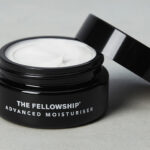 The Fellowship
The Fellowship It’s also important to remember your skin changes throughout the year. “I have oily to combination skin,” said Paolo. “It’s completely different in the winter months than it is in summer and I change my cleansers and moisturisers accordingly when I feel the need to.”
If you find a product you like and want to stick with it, that’s great. But if your skin starts to change and become drier in winter, for example, you might have to try a different moisturiser.
Zaid added: “We need to get away from the idea that taking care of our skin is about preventing wrinkles or focusing on anti-ageing. It’s not about vanity, it’s about nourishing our skin and taking care of ourselves. It’s less about gender and more about being holistic. Today’s men and women are more likely to be focused on greener, cleaner formulas than gender.”
What about hair?
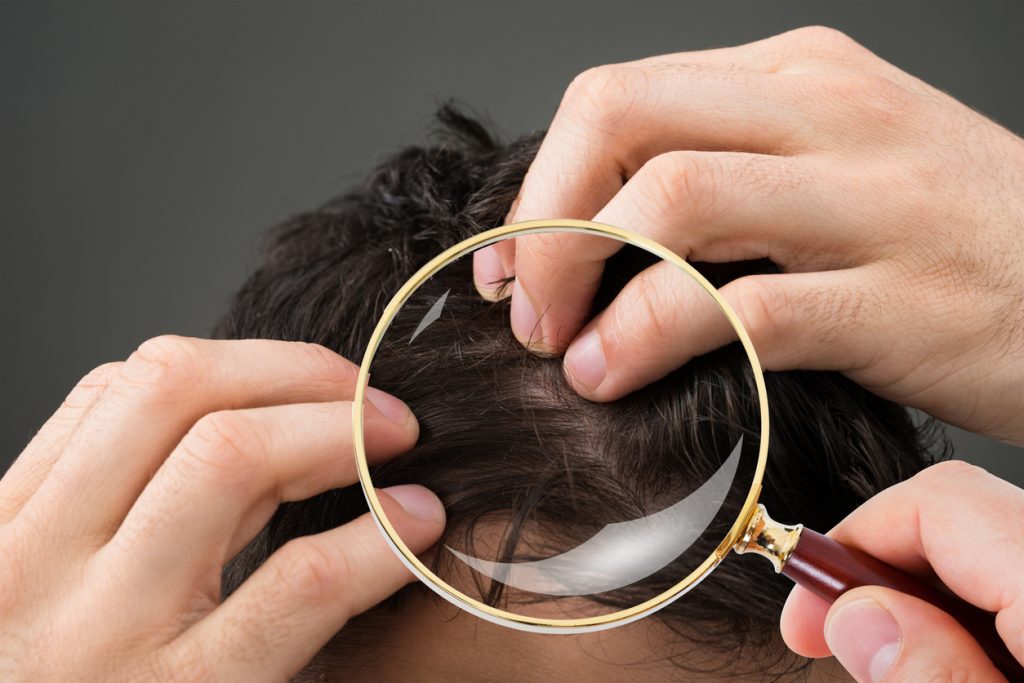 Getty Images/iStockphoto
Getty Images/iStockphoto
Although there are a number of differences cited between male and female skin, hair is hair. You may experience thinning hair, or hair loss and male pattern baldness, but that’s to do with your genetics, not solely your gender.
There are shampoos that contain caffeine, for instance, which can help promote hair growth. These may benefit men more than women but in reality, both genders can use it and will have largely the same results.
FURTHER READING: The best men’s shampoo for thinning hair, dandruff, hair loss and more
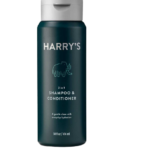 admin | MBman
admin | MBman Products marketed at men often claim to be able to do everything in one go, making it cheaper and quicker. Yet this convenience sometimes comes at the expense of the product’s effectiveness.
“Men’s products that can wash and condition their hair, car and kitchen all-in-one are an absolute myth and so dated,” explained Paolo. “The best advice I can give you is, shampoo washes your scalp and conditioner washes your hair.“
Just like with skin, everyone will have different needs for their hair. If you dye or bleach your hair, it might need more treatment than someone who has never coloured theirs. If you have straight hair, it might need a different product compared to someone with curly hair.
These differences aren’t down to gender, so try and look past the marketing to find a product that works best for you – whether that’s from the ‘female’ section of the supermarket or not.
FURTHER READING: Hair products for men: The best haircare for short, long, thick, thin and curly styles
And finally…men’s makeup
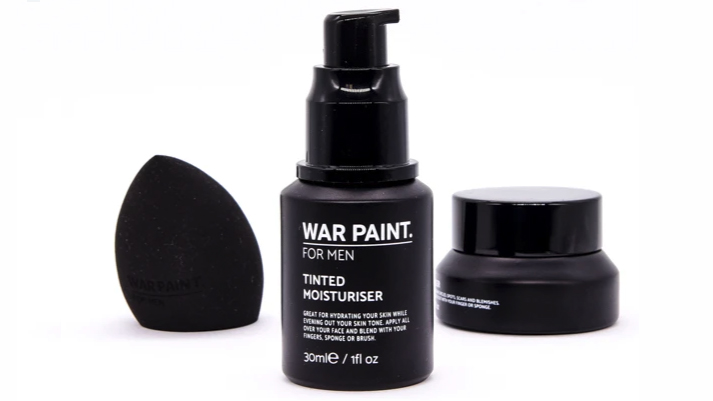 MBman
MBman
So what about when it comes to makeup marketed separately at men, or women? In 2019, a men’s makeup brand called War Paint For Men was criticised because of its marketing. Its critics suggested that its harsh branding and name were perpetuating toxic masculinity.
Others bemoaned the fact that the formulas and products weren’t all that different from female-focused brands, yet in some instances cost more.
The brand defended itself, citing the differences in male and female skin we’ve mentioned above. It added that the marketing is as much to do with helping men feel confident about buying makeup as it was the formulas themselves.
It is true that most makeup products, regardless of gender or brand, will work in a similar way for men and women. It’s also true that you should buy makeup based on your skin type (oily/combination/mature etc) instead of relying on whether it’s aimed at your gender or not.
Yet Paolo said it’s important to shop somewhere you feel comfortable. For many men, this will be a brand marketed at them. In a lot of cases, the range and selection available from traditionally female beauty brands can be overwhelming. Especially if you’re only just getting started with makeup for men.
“Beauty insiders and professional makeup artists will tell you that it’s a myth and all down to marketing,” added Paolo. “However, it really depends on the level of experience a customer has. It can be super intimidating shopping for a bit of concealer or foundation for the first time in a beauty hall anywhere in the world.”
He recommends brands that have always celebrated androgyny, even before it was a trend, such as MAC and Bobbi Brown. Or men’s brands like Shakeup Cosmetics, which are really easy to apply for beginners and user-friendly. “It’s really about being comfortable and enhancing your own beauty,” he said.
MORE LIKE THIS





